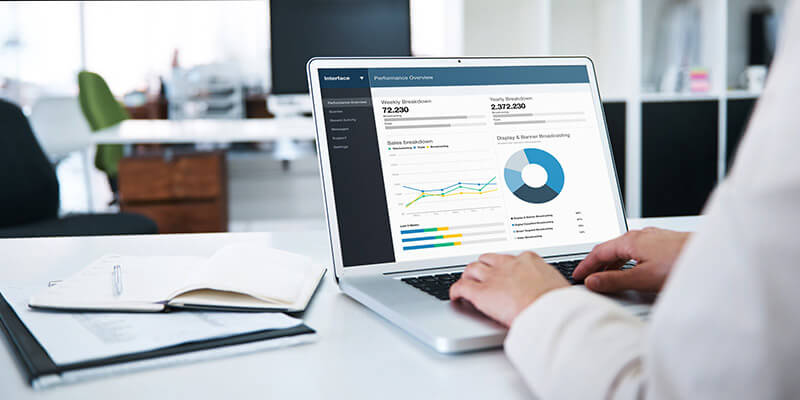How to Make the Most of Your Software Evaluation Period
- Written By Dana Pagliarulo

Determining whether a new software system will meet your company’s needs may seem like a gamble.
- How can you tell if this new product will really streamline your workflow?
- Will it actually increase process efficiency?
- Can you guarantee that it will add value to your organization?
Vendors understand that you’ll need to get your hands on the product before you can make an informed decision. Luckily, some offer a time-boxed “trial” period where you and your team have a chance to apply the software to your workflow and obtain a much sharper perspective. By taking full advantage of this evaluation period, you’ll be able to determine whether or not the solution will work for you.
Here’s how to make the most of your evaluation period before investing in full.
Take time to prepare. Don’t just dive in.
After identifying software that seemingly checks all the boxes, it’s tempting to want to begin trying it immediately. However, preparation is a crucial step that lays the foundation for an accurate assessment. Here are some less obvious things to do in order to be thoroughly ready to analyze the new product:
Develop test cases: Include both standard transactions and anomalous outliers, as well as things that are on your team’s “wish list.” Identify and document an array of scenarios such as initiating records from scratch, conducting tests on reporting at the beginning/middle/end of the workflow, and interfacing/importing external records.
Use existing data: If your prospective software will replace an existing system, use your trial period to evaluate how your new solution works with your existing data. Your IT department can provide your vendor with a detailed list of the types of data objects you’ll need to manage which can be used to populate the new system with your current data set. Even if you must scrub some of your data before sharing with the vendor, the more you can provide, the more accurately they can assess your needs. If you were to license the software, using the data from the evaluation period may be used for your implementation of the product.
Gather requirements from your legacy system: Your current system was built on set of requirements and design documents. If you want your replacement system to mimic those assumptions, share these details with your vendor. This information will help them determine if the system will meet your needs as-is or if it will require customization.
Treat it seriously, like a project
Though your evaluation period might not cost anything upfront, there is a very real opportunity cost if the software ultimately doesn’t deliver or if you dismiss a quality product without sufficient review. Therefore, treat your software evaluation period like a mini-project. Dedicate the same level of attention as if your company had already invested capital.
Create a one-page “mini” charter that defines important specs such as: What is the purpose of this project? What is its perceived benefit? Who is assigned to work on it? Who ultimately “owns” it? What are the roles and responsibilities of each individual or team? What is the scope of the project? Developing an official “work order” enables you to obtain signoff for teams to dedicate their time to evaluating the software, thus increasing the chance that all parties will take the evaluation period seriously.
As part of defining the scope of this mini-project, don’t hesitate to bring in an outside subject matter expert who can springboard you into software usage to accomplish your goals straight away. Their detailed answers about your specific questions can save you plenty of time that may otherwise be wasted on back-and-forth between you and your vendor.
Finally, be sure to hit your dates. All projects have a timeline and this one should be no different. Work with your vendor to establish an achievable schedule that will keep your teams on track. During evaluation periods for our own state filings software, StateFilings.com, we create a week-by-week plan that outlines what we will accomplish, from training to full implementation. A timeline creates a necessary structure that keeps everyone on track and enables teams to identify any hiccups early on.
Ask plenty of questions
Don’t make assumptions about what the software may or may not be able to do. If it is important to your particular process and the answer is not apparent, ask! Be specific about what you need. By describing your workflow requirements in detail, the vendor can train you on how to perform your desired task, explain how the software handles the requirement in a more efficient manner, or determine that the software may need further customization to meet your needs. Don’t be afraid to ask questions that may seem obvious. It’s faster and easier to confirm that your needs will be met than to worry whether or not the software can perform the basics.
Additionally, feel free to ask the vendor to share the product road map with you, which will detail upcoming features. This might answer some of your questions about functionality and may reveal opportunities for you to improve your own workflow when new features are launched.
Determine how close you are to going live
If you present your vendor with a full set of current data, going live may be as easy as “flipping a switch” after signing the licensing agreement. If the data is only a partial set, or requires additional software customization, fully operational real-world use may take longer. Work with your internal teams and vendor to determine what functionality is mission-critical and what can be postponed until after launch. Strategic configuration during the evaluation period can minimize implementation delays. Perr&Knight’s StateFilings.com evaluation period has resulted in many near-immediate go-live implementations for customers.
Help your vendor help you
Your vendor wants to do more than just sell you a product. Ultimately, they want to solve your problem. Make sure that your teams are not impeding the process. When the vendor asks for information, keep turnaround time to a minimum. Establish a regular meeting schedule (once a week is preferable, but bi-weekly meetings can suffice) and keep communication clear and frequent. As mentioned above, if you have questions, ask them ASAP. Finally, if it becomes clear that the software solution is not what you expected and will not meet your needs, let your vendor know immediately. Instead of wasting everyone’s time, it’s better to move on.
The goal of your software evaluation period is to reduce surprises further down the line. Pressure-testing the system from all angles will provide a clear perspective on what the software can and cannot do. By taking the trial period as seriously as you would any other project, you stand the best chance of achieving your ultimate goal: implementing a smarter solution for your organization.





